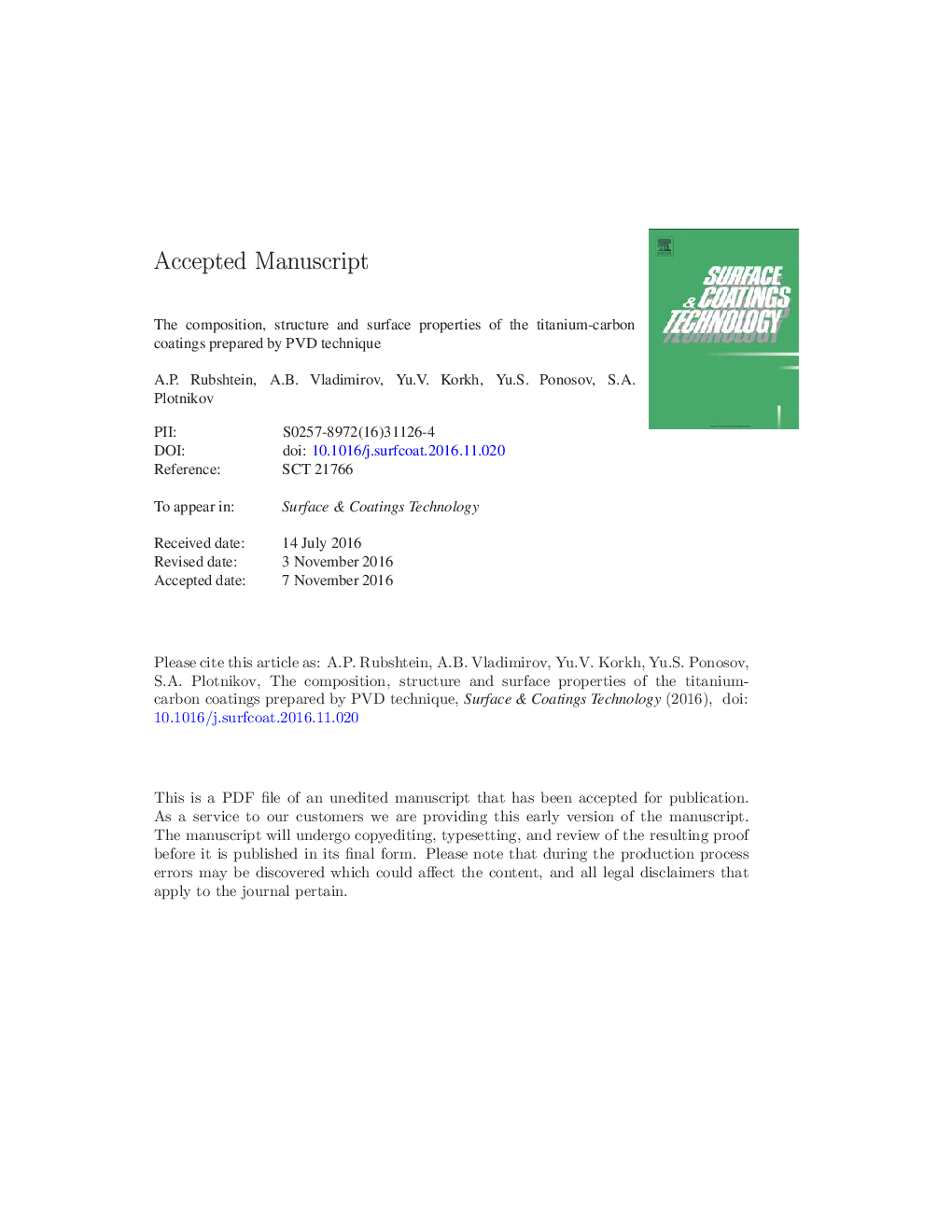| Article ID | Journal | Published Year | Pages | File Type |
|---|---|---|---|---|
| 5465307 | Surface and Coatings Technology | 2017 | 23 Pages |
Abstract
Amorphous carbon (a-C) and titanium-carbon nanocomposite TiCx/a-C coatings were deposited using the PVD technique. TiCx/a-C were deposited by simultaneous sputtering of graphite and titanium targets using arc pulse (at the frequency of 3 to 25Â Hz) and arc sputtering respectively. The composition, chemical structure and electrical properties of the surface have been studied by energy-dispersive X-ray spectroscopy, Raman spectroscopy and Kelvin probe force microscopy (KPFM). The increase in graphite sputtering arc pulse frequency is accompanied by the growth of carbon content in TiCx/a-C from 38 to 82Â at.% and by the change of phase composition. The incorporation of the Ti+ ions into the plasma flow of C+ increases the number of sp2 bonds in carbon matrix of TiCx/a-C, as compared to a-C deposited at the same frequency. The maps of contact potential difference (CPD) distribution over the surface of a-C and TiCx/a-C obtained by KPFM were used to calculate the root-mean-square (RMS) values of CPD. In a-C RMS of CPD decreases with scale up of arc pulse frequency. In TiCx/a-C RMS of CPD nonlinear depends on the carbon content and reaches maximum at CCÂ =Â 44Â at.%. It has been suggested, that at the contacts of different phases an interface thin layer is formed. The electronic properties of this layer differ from the electronic properties of the bulk phases of nanocomposite. The increase in volume fraction of interface component leads to the drop of RMS of CPD.
Related Topics
Physical Sciences and Engineering
Materials Science
Nanotechnology
Authors
A.P. Rubshtein, A.B. Vladimirov, Yu.V. Korkh, Yu.S. Ponosov, S.A. Plotnikov,
